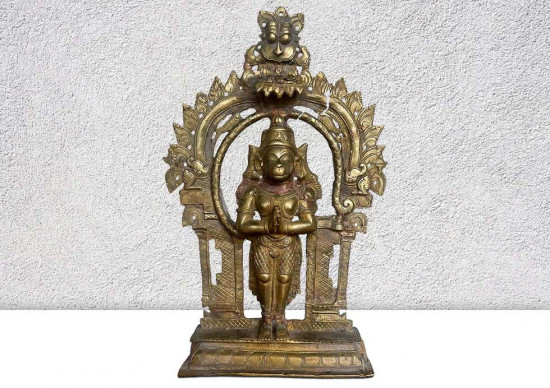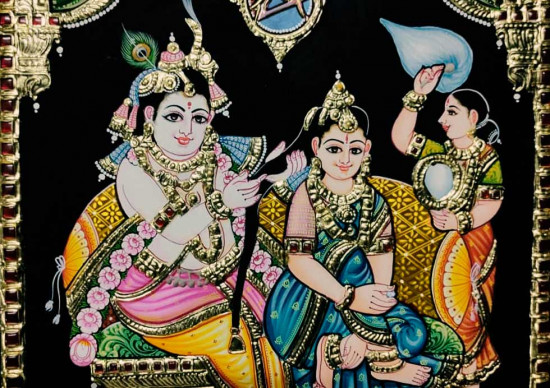
Wood carving in India boasts a rich and diverse history, deeply intertwined with the cultural, religious, and artistic traditions of the subcontinent. The practice of wood carving in India has evolved over centuries, showcasing a remarkable fusion of skill, creativity, and spiritual significance. Let’s delve into the historical journey of wood carving in India.
Ancient Roots (500 BCE - 500 CE)
The origins of wood carving in India can be traced back to ancient civilizations, with evidence suggesting that intricate wooden artifacts were crafted during the Mauryan and Gupta periods (circa 500 BCE – 500 CE). These early carvings adorned temples, palaces, and royal residences, depicting mythological themes, deities, and scenes from daily life. The use of wood carving in architectural elements, such as pillars and doorways, became prevalent, showcasing the craftsmanship’s integration into structural design.
Golden Age of Wood Carving (500 CE - 1200 CE)
During the Gupta Empire and subsequent dynasties, wood carving flourished, reaching its zenith during the medieval period. Temples and stupas, particularly in regions like Odisha, Rajasthan, and Karnataka, became showcases of intricate wood carvings. The temples at Khajuraho, Konark, and Halebid are examples of this era, featuring detailed carvings depicting celestial beings, divine narratives, and intricate floral motifs. Wood carvings adorned not only religious structures but also royal palaces and homes of the elite.
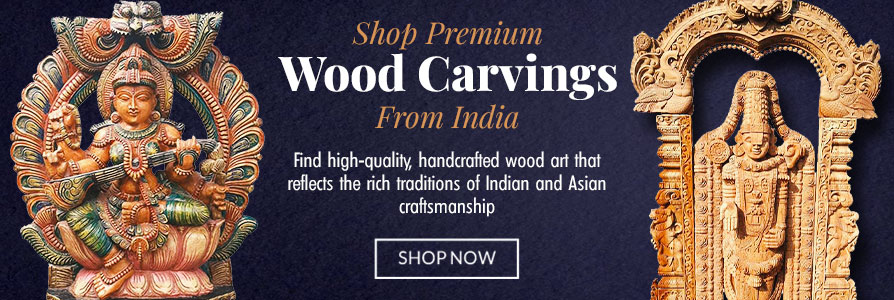
Islamic Influence (1200 CE - 1700 CE)

With the advent of Islamic rule in parts of India, wood carving adapted to incorporate Persian and Central Asian influences. Intricate geometric patterns, arabesques, and calligraphy became prominent features in wooden artifacts. The blending of Hindu and Islamic artistic elements resulted in a unique synthesis, exemplified in structures like the wooden interiors of the Mughal forts and palaces.
Colonial Era and Beyond (1700 CE - Present)
The colonial period witnessed a shift in the patronage of wood carving. European colonial powers introduced new techniques and styles, influencing the aesthetics of Indian wood carving. The craftsmanship continued to thrive, adapting to changing tastes and preferences. Post-independence, wood carving retained its significance, finding expression in modern furniture, religious artifacts, and decorative items.
Regional Styles and Influences
India’s diverse cultural landscape has given rise to distinct regional styles of wood carving. For example:

Kashmiri Wood Carving
Kashmiri wood carving stands out for its remarkable delicacy, characterized by intricate floral patterns and meticulous lattice work. The artisans of Kashmir, inspired by the serene landscapes and cultural heritage of the region, channel their craftsmanship into creating pieces celebrated for their unparalleled intricacy. This style often finds expression in furniture pieces and screens, where the artistry mirrors the natural beauty and cultural richness of Kashmir.
Rajasthani Wood Carving
Rajasthani wood carving is a vibrant celebration of colors and intricate designs, reflecting the cultural opulence and historical influences of the Rajput and Mughal eras. The artistry, marked by regal grandeur, finds its way into various aspects of daily life, from ornate furniture to decorative panels. Rooted in the rich history of Rajasthan, this style weaves a visual tapestry that narrates the region’s royal legacy.

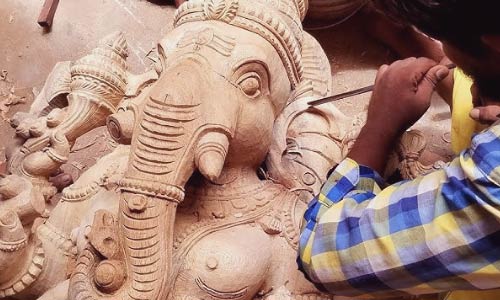
South Indian Wood Carving
South Indian wood carving is predominantly expressed through temple architecture, where depictions of deities, mythological scenes, and ornate motifs transform sacred spaces into visual narratives of divine stories. Rooted in the religious and mythological traditions of South India, this carving style reflects the devotion and artistic brilliance of the region. Adorning the pillars, doorways, and sanctums of temples, South Indian wood carving is a testament to the spiritual and artistic heritage of the southern part of the country.
Gujarat Wood Carving
Gujarati wood carving stands out for its intricate detailing and elaborate designs. Characterized by the use of geometric patterns and floral motifs, this wood carving tradition reflects Gujarat’s rich cultural and architectural heritage. Seen in furniture, doors, and various architectural elements, the craftsmanship of Gujarat adds an exquisite touch to both traditional and contemporary spaces.


Uttar Pradesh Wood Carving
Uttar Pradesh, particularly in regions like Saharanpur, has earned acclaim for its masterful creation of detailed and ornate wooden furniture. The wood carving in Uttar Pradesh is known for its export-quality craftsmanship, and the intricate carvings on tables, chairs, and cabinets reflect the state’s dedication to preserving and evolving its rich woodworking tradition.
Kerala Wood Carving
Kerala, renowned for its temple wood carving, also boasts a distinct tradition of creating wooden sculptures, masks, and decorative items. The wood carving in Kerala extends beyond religious contexts, with intricately carved wooden items finding applications in cultural performances, religious ceremonies, and as elegant decorative elements in homes.


Punjab Wood Carving
Punjab’s wood carving tradition is characterized by bold and robust designs, often featuring geometrical patterns. Known for its sturdiness and practicality, Punjabi wood carving is commonly seen in furniture and decorative pieces. The carvings reflect the state’s unique aesthetic, combining functionality with artistic expression.
Himachal Pradesh Wood Carving
Himachal Pradesh, nestled in the mountains, has a distinctive wood carving tradition influenced by its natural surroundings. The carvings frequently depict local flora, fauna, and mythological motifs. Wooden panels, doors, and architectural elements in traditional Himachali homes showcase the unique wood carving style of this region, reflecting a deep connection to the mountainous landscape.


Karnataka Wood Carving
Karnataka, known for its temple architecture, also carries a tradition of ornate wood carvings in traditional homes and furniture. Wooden doors and furniture from Karnataka feature intricate carvings that reflect the cultural ethos of the state. The wood carving in Karnataka seamlessly blends tradition with functionality.
West Bengal Wood Carving
West Bengal’s wood carving tradition draws inspiration from its cultural diversity, resulting in artifacts with intricate designs influenced by the state’s folklore and traditions. Wooden sculptures, masks, and artifacts find applications in religious ceremonies, festivals, and cultural events, showcasing the adaptability of wood carving to diverse cultural influences.
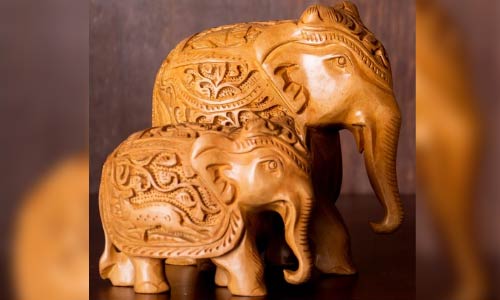
These regions collectively contribute to India’s diverse wood carving heritage, reflecting the nation’s cultural vibrancy, local aesthetics, and the skillful evolution of this ancient craft across different landscapes and traditions. Each place adds its unique touch to wood carving, demonstrating the versatility and timelessness of this craft in the Indian context.
Contemporary Scenario

In the contemporary era, wood carving in India has evolved into a vibrant industry. Artisans, often working in family traditions, continue to create exquisite pieces that blend traditional techniques with modern designs. Wood carving remains an integral part of India’s cultural heritage, with artisans contributing to both the preservation of ancient techniques and the creation of innovative, contemporary pieces.
The history of wood carving in India is a testament to the enduring legacy of craftsmanship, where skillful hands transform blocks of wood into timeless works of art, preserving the cultural and artistic heritage of the subcontinent.
The history of wood carving in India is a testament to the enduring legacy of craftsmanship, where skillful hands transform blocks of wood into timeless works of art, preserving the cultural and artistic heritage of the subcontinent.




